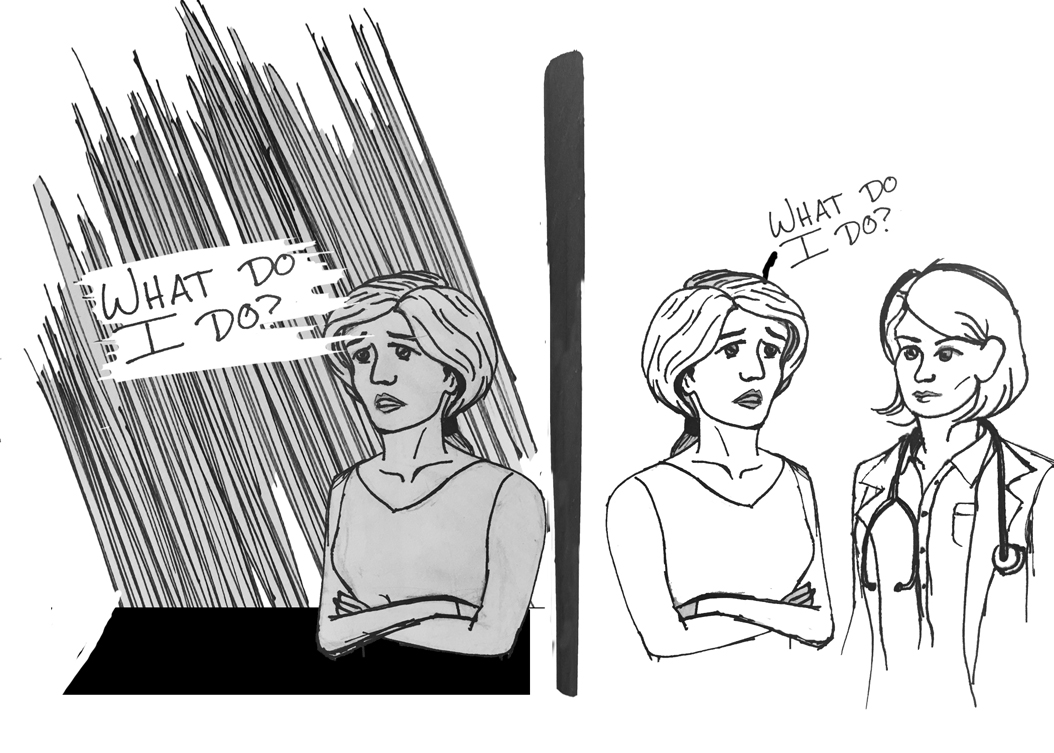State abortion laws harm low-income women the most


Liz Stahl | Staff Illustrator
Not long after the 44th anniversary of Roe v. Wade, the landmark 1973 Supreme Court decision that legalized abortion nationwide, a woman’s right to choose is under attack once again.
Lawmakers in 19 states passed new laws on women’s reproductive rights in 2016. And Pennsylvania is, unfortunately, doing the same. A bill recently passed in the Republican-controlled state Senate earlier this month would ban abortions after 20 weeks of pregnancy — instead of 24 — a move that leaves little room for pregnant women who need abortions due to institutionalized economic disenfranchisement.
A potential passage of such a bill would only make the lives of disadvantaged women and families harder. Pennsylvania Gov. Tom Wolf vowed to veto the legislation, calling it “radical and unconstitutional.” Right now, it seems Republicans in the GOP-controlled House and Senate don’t have enough support to override a potential veto — a reassuring thought for women across the state.
Strict abortion legislation in other conservative states should offer a lesson for Pennsylvania and further discourage Wolf from signing the bills, should they make it to his desk.
In Texas, a bill that caused the closure of many of the state’s abortion-providing clinics — and was ruled unconstitutional in June 2016 — showed how disproportionately women of color and women from low-income backgrounds are affected by abortion legislation. In the 23 Texan counties with clinics, 60 percent of low-income women relied on those clinics before they started shutting down.
A 2015 University of Texas study found that 100,000 to 240,000 Texan women tried at-home abortions, revealing a dangerous rise in illegal abortions in areas with more restrictive laws. More restrictive access to abortions doesn’t deter women from getting them — they just do so less safely.
Due to poor sex education in low-income schools and the cost of contraception, women from low-income backgrounds are five times more likely to have unplanned pregnancies than their higher-earning counterparts. According to the Guttmacher Institute, 75 percent of women in the United States who had abortions in 2014 were “economically disadvantaged.”
This further substantiates the correlation between income levels and the likelihood of abortion. Additionally, a woman who has to drive farther to get to an abortion provider or women’s health clinic — especially if it’s in a state where she is required to visit the clinic more than once in order to get an abortion — sacrifices time and money she cannot afford.
In Indiana, former Gov. Mike Pence signed a bill into law in March 2016 that dramatically increased the restrictions on the already-tight regulations in the state. The law placed the financial responsibility of cremation or interment of an aborted fetus on the mother and disallowed the abortion procedure on the same visit as the first ultrasound — financial and time constraints that both impact low-income women’s ability to obtain abortions the most. The legislation was, rightfully, blocked by a U.S. District Court Judge in June 2016 before it was set to go into effect in July.
Additionally, economic barriers block women from low-income backgrounds from accessing abortions. Financially strapped women are more likely to wait longer for the money needed to pay for an abortion. So when legislators limit the time frame available for receiving abortions, women who don’t have extra savings are forced to scramble for money or not be able to get the procedure in time.
Economic differences among races directly correlate to racial disparities in abortion in Pennsylvania. White women had 49 percent of abortions and Hispanic women had 8.9 percent in 2014, according to the Pennsylvania Department of Health. Although African-Americans comprise less than 14 percent of the population, African-American women accounted for 42.9 percent of abortions in Pennsylvania.
In the Pittsburgh region, 12.3 percent of people live below the federal poverty rate and African-Americans are three times more likely to fall under it than people who are white or Hispanic, presenting double the burden for women of color. If this anti-abortion bill were to become law, women of color in Pittsburgh would be more heavily impacted than any other demographic group.
And when you limit access to abortion for the women who need them, their already burdened financial situations are further exacerbated after the birth of a child. Raising children is expensive for any family, let alone women who already need help paying the bills on a day-to-day basis. Many women with low earnings simply can’t afford to have children — not without relying heavily on outside financial support from the state or non-profit organizations.
Abortion is not an choice women make lightly. For many, it’s because of severe medical needs.
And for others, predominantly women of color living below the poverty level, it’s both a result of their situation and an action they need to take in that’s in their own best interest.
If Pennsylvania lawmakers are trying to look out for women in the state, they should start by addressing the socio-economic inequalities that make some of us more likely to need abortion procedures — not by taking away our right to choice.
Write to Danielle at dap157@pitt.edu.
Recent Posts
Opinion | Final thoughts
Senior staff columnist Emily O’Neil discusses her final experiences at college and how the time…
Opinion | How to have a resisting-fascism summer
Contributing editor Emma Hannan talks about ways you can stay politically active while not in…
Who Asked? // What comes next?
This installment of Who Asked? by senior staff writer Brynn Murawski faces an uncertain future.
A Good Hill to Die On // Goodbye
In the final edition of “A Good Hill to Die On,” I decided to rant.
Review | Delayed checkouts at ‘The White Lotus’: An unoriginal third season
(Contains Spoilers) There is no meditation class, no reiki session, no nutritionally balanced, organic food…


